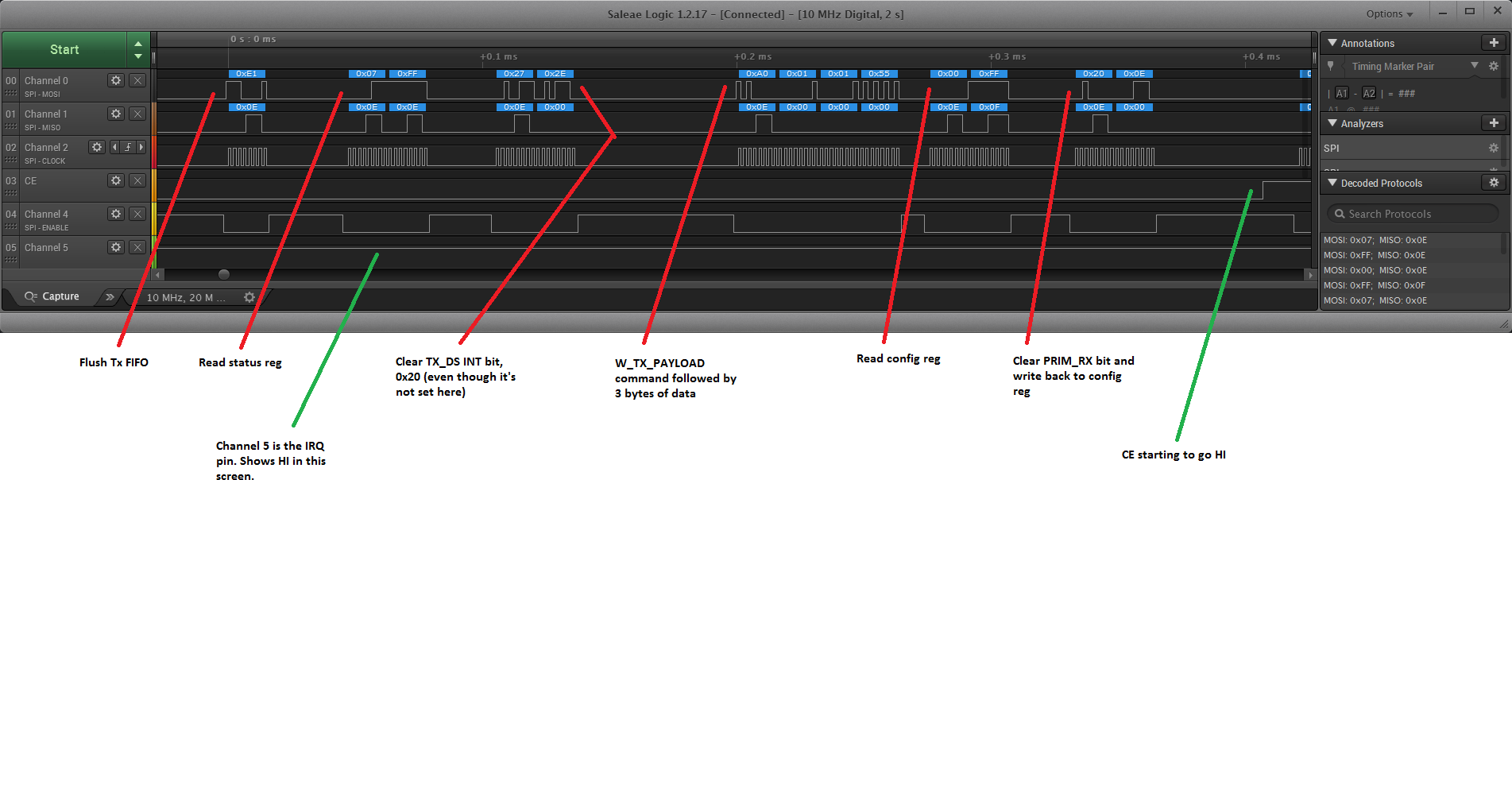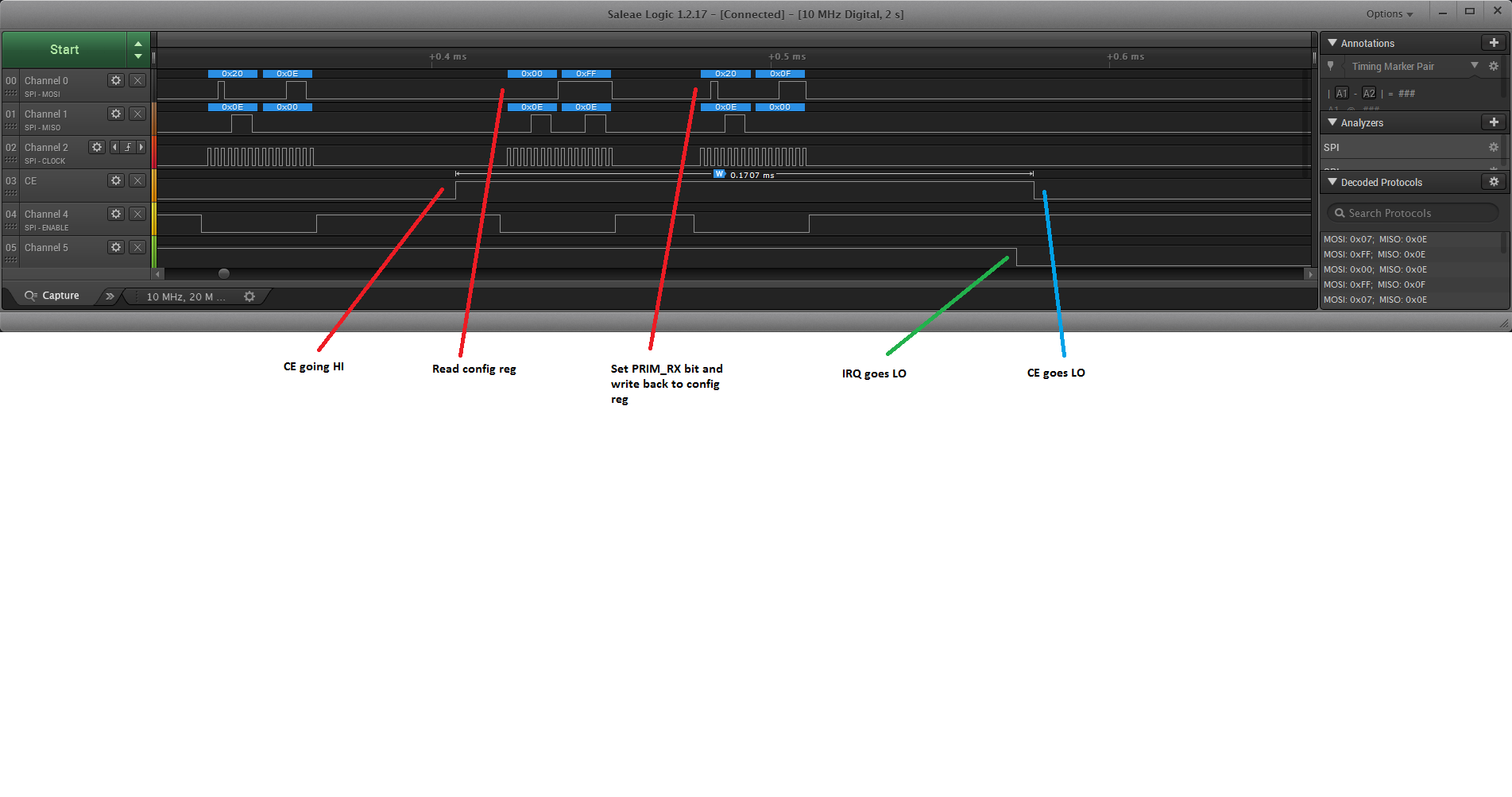I am trying to get the nRF24L01+ working with a PSoC 3. I initialize the nRF like this..
spiWrite1(NRF_CONFIG, 0x0F); // reflect TX_DS, RX_DR and MAX_RT interrupts as IRQ
// active low, enable 2-byte CRC, power-up, RX mode
spiWrite1(NRF_SETUP_AW, 0x03); // 5 byte address
spiWrite1(NRF_RX_PW_P0, 0x03); // 3 bytes of payload
spiWrite0(FLUSH_TX); // Flush Tx FIFO
spiWrite0(FLUSH_RX); // Flush Rx FIFO
nrfClearStatusInt(STAT_MAX_RT | STAT_RX_DR | STAT_TX_DS); // Clear INT's
CE_Write(0); // stand-by
Then, in the main loop, I transmit some test data when a button in pushed..
spiWrite0(FLUSH_TX); // Clear Tx FIFO
nrfClearStatusInt(STAT_TX_DS); // Clear TX_DS INT
txdata[0] = Input_1_Read(); // Fill an array with data to send
txdata[1] = Input_1_Read(); // The first two bytes are the switch condition (0 or 1)
txdata[2] = 0x55; // Some dummy data
spiWriteTxData(txdata, RX_PAYLOAD_BYTES); // Send the array of data
The "spiWriteTxData" function looks like this..
void spiWriteTxData(const uint8 txdata[], uint8 bytes) {
uint8 array[RX_PAYLOAD_BYTES+1], stat;
int x, y;
array[0] = W_TX_PAYLOAD; // nRF command to fill Tx FIFO
for (x = 0, y = 1; x < bytes; x++, y++) {
array[y] = txdata[x]; // Copy data to send into array (after nRF command)
}
SPIM_PutArray(array, bytes+1); // Send the array to the nRF chip
CE_Write(0); // Enable chip for Tx
stat = spiRead1(NRF_CONFIG); // Read nRF config register
stat &= ~CFG_PRIM_RX; // Clear the PRIM_RX bit
spiWrite1(NRF_CONFIG, stat); // Write new value to config register
CE_Write(1); // We've waited > 10uSec, so send CE HI
stat = spiRead1(NRF_CONFIG); // Read the config register
stat |= CFG_PRIM_RX; // Set the PRIM_RX bit
spiWrite1(NRF_CONFIG, stat); // Write value back to config reg
}
That seems to work (as seen my the logic analyzer outputs below).


So my first question is; does that look correct (am I actually transmitting the 3 bytes I think I am)?
Second, why is the IRQ going LO, I haven't recv'd an ACK and didn't use the NO_ACK Tx command?
Third, how do I receive that data? On another PCB I have an nRF intialized the same way as above, when I check with analyzer CE is always LO, the status register returns 0x0E and the config register returns 0x0F. Do I need to set the receiver up differently or am I missing something?


